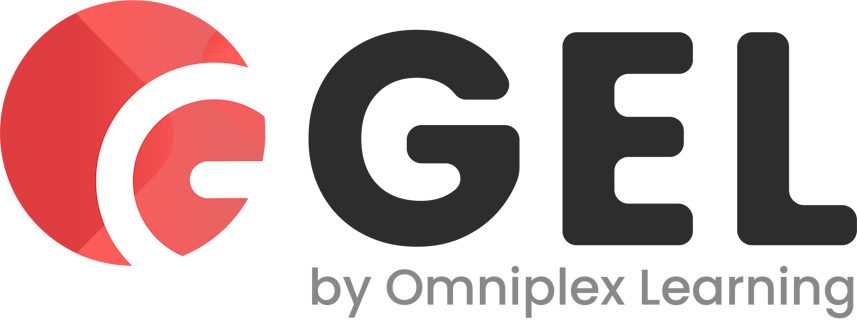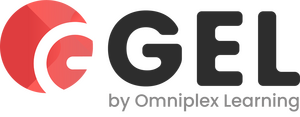These days, it goes without saying that the worlds of business and technology are inextricably linked. In order to stay competitive, a company needs to evolve both its corporate objectives and the capabilities of its IT services, no matter how painful or awkward this process may be.
Naturally, this kind of change cannot start with a blank canvas. The development of IT services should be driven by an awareness of technological opportunities, client expectations, strategic goals, and the current capabilities and practices within an organization. Without this, IT service management (ITSM) teams can end up wasting time, money, and effort, giving competitors a chance to lure customers away with more efficient and higher-quality offerings.
What is ITIL?
ITIL, formerly known as the ‘Information Technology Infrastructure Library’, is the world’s most popular ITSM framework. Used across virtually every industry, from technology to animation, ITIL is designed to help users perfectly align their IT services and business requirements. It fosters an atmosphere of continual service improvement that enables businesses to keep delivering the best end-products and services possible, all with minimal wastage and maximum strategic alignment.
ITIL 4 (sometimes mistakenly called ‘ITIL v4’) is the latest iteration of the framework. AXELOS designed it with input from the ITIL practitioner community, which provided invaluable insight into how the framework needed to change in order to remain relevant. The result was a framework that offered all the benefits of ITIL v3 while also reflecting the most up to date insight and best practices from the world of ITSM, including its most popular methodologies, the shape of the marketplace, and how to optimize IT services in a way that creates maximum value.
How Does ITIL work?
ITIL 4 is a framework of best practices centred on creating, managing, and building on IT services within an environment of continuous improvement. It takes a comprehensive overview of modern IT service management, taking into account elements like digital transformation, IT governance, cloud systems, value streams, and even other popular frameworks.
If you take a quick look at the ITIL 4 certification path, you will see how wide-ranging it is. Topics range from stakeholder engagement to working in high-velocity IT environments. As was the case with ITIL v3, students can choose the modules best suited to them. Career IT service managers may also choose to complete the entire certification path to reach the rank of ITIL Master.
While much of the v3 syllabus remains in use, several key components were updated. Most significantly, the ITIL Service Management Lifecycle has been replaced with the ITIL Service Value System (SVS). This is an operating model designed for the creation, delivery, and continual improvement of IT services.
The SVS is composed of:
- The ITIL Service Value Chain (SVC)
- ITIL Governance
- ITIL Guiding Principles
- ITIL Practices
- Continual Improvement
Central to the SVS is the Service Value Chain (SVC), which delivers services via six key activities:
- Plan
- Engage
- Design and Transition
- Obtain and Build
- Deliver and Support
- Improve
The SVS enables the creation of ‘streams’ suited to specific purposes, with each stream containing Practices, Roles, and Activities designed to produce desired results. However, the system is non-prescriptive and can be easily adapted to suit individual organizations, inputs, and outputs.
There are also ITIL’s Four Dimensions, which replaced the 4 Ps of Service Design. These include:
- Organization and People
- Information and Technology
- Partners and Suppliers
- Value Streams and Processes
These dimensions help practitioners to balance the elements of the SVS and take into account multiple elements of modern ITSM, rather than just focusing on technical aspects. At the same time, the dimensions are flexible enough to help organizations drive improvements seamlessly and in a way that suits them.
So, ITIL ‘works’ by offering guidance across the spectrum of IT service management. This includes both actionable insight and relevant tools and processes.
For a better understanding of how ITIL actually operates, it is necessary to look at the individual modules of ITIL 4.
Introducing the ITIL Certification Path:
ITIL 4 Foundation
ITIL 4 Foundation serves as an introduction to the framework, providing students with a summary of AXELOS’ updated approach to ITSM. It includes an explanation of the end-to-end ‘Service Value System (SVS)’, along with the frameworks which have been recently integrated with ITIL, such as DevOps, Agile, and Lean.
The module covers a number of key elements, including ITIL’s guiding principles, the four dimensions of ITIL 4, the Service Value System (SVS), the Service Value Chain (SVC), and the seven ITIL practices. It also goes into detail on what students can expect from the intermediate certification path to help them choose between modules in the ‘Managing Professional’ and ‘Strategic Leader’ branches.
ITIL Specialist: Create, Deliver and Support (CDS)
ITIL 4 Specialist: Create, Deliver and Support looks at the core service management activities that make up ITIL 4. Students learn how to integrate various activities and value streams to create, deliver, and support IT services and products. The module also covers tools, practices, and methods designed to boost performance and ensure quality and continuous improvement.
Students come away from the module with a keen understanding of how to deliver reliable and innovative technology-enabled results. This kind of consistently high quality is essential in today’s IT market, where the best competitors are constantly looking for ways to maximize the value of their work.
ITIL Specialist: Drive Stakeholder Value (DSV)
ITIL Specialist: Drive Stakeholder Value examines engagement and interaction between service providers and their suppliers, customers, and users (in other words, their ‘stakeholders’). With an understanding of how this works, students will be better equipped to translate stakeholder demands into clear targets and tangible value.
Candidates learn to use a variety of tools and methods designed to maximize stakeholder satisfaction. The module also covers elements such as ‘Service Level Agreement (SLA)’ design, communication, relationship management, multi-supplier management, User Experience (UX) and Customer Experience (CX) design, and customer journey mapping. ITIL practitioners can also use the module as a reference guide for future projects.
ITIL Specialist: High Velocity IT (HVIT)
ITIL Specialist: High Velocity IT focuses on the environment of modern IT. Digital organizations and operating models must contend with a high-velocity market, where being competitive means having to optimize your speed, responsiveness, agility, and cost-effectiveness as you strive to release high-quality products and services. To maximize your business value, you cannot ignore the reality of this situation. Instead, you need to equip yourself to master it.
Candidates look at valuable and widely-used working practices that can help them thrive in high-velocity environments, such as Agile and Lean. They also examine useful technology and practices, including automatic testing, automation, and the Cloud.
ITIL Strategist: Direct, Plan and Improve (DPI)
ITIL Strategist: Direct, Plan and Improve looks at how IT service managers can apply a strong strategic direction to their work, reassessing and improving their practices as they go in order to guarantee laser-guided focus.
Students also learn about the impact and influence of Lean and Agile ways of working and how these styles can be leveraged within the ITIL framework.
Finally, the module examines various strategic and practical methods for planning and delivering continual improvement for IT-enabled products and services. This is also another module that can be treated as a reference guide by successful practitioners.
ITIL Leader: Digital & IT Strategy (DITS)
ITIL Leader: Digital & IT Strategy focuses on the alignment of IT/ digital strategy with long-term corporate goals. These days, organizations across most industries are heavily impacted by new and disruptive technology. This module examines how ITIL can be applied at a strategic level, enabling practitioners to rapidly respond and adapt to remain competitive and take advantage of new opportunities.
This module is ideal for anyone interested in the leadership of ITSM, regardless of their current level of experience. Students learn how to deal with disruptive technology, not just now but in the future. Considering the continual and rapid evolution of IT and technology in the modern world of business, having this capability is essential for future-proofing an organization.
ITIL Managing Professional (MP) Transition
With the announcement of ITIL 4, students and practitioners of ITIL V3 were eager to find out how necessary it would be to update their qualifications. On the one hand, the insight offered by ITIL V3 is still highly relevant. On the other hand, ITIL 4 is enough of a departure that most ITIL V3 qualifications are not valid prerequisites for its certification scheme. In short, those who had invested serious time in ITIL V3 training were left wondering whether they would have to restart from scratch.
ITIL Managing Professional Transition is a module designed to fix this problem. Anyone who holds the ‘ITIL V3 Expert’ qualification (or a minimum of 17 credits) can take the module to become an ITIL 4 Managing Professional with just one exam. The qualification covers ITIL 4 Foundation and every module within the ‘Managing Professional’ stream, allowing successful students to reach the rank of ITIL Expert with just one additional examination.
Note: The ITIL Managing Professional (MP) Transition has been discontinued as of September 2022.
What Are the ITIL 4 Extension Modules?
More recently, AXELOS announced two new modules for ITIL 4.
These extension modules do not have the Foundation exam as a prerequisite, meaning that anyone can study them without having to commit to the rest of the certification path.
ITIL Specialist: Sustainability in Digital & IT
ITIL Specialist: Sustainability in Digital & IT focuses on how ITIL teams can support ‘sustainability’. As well as outlining key concepts such as Sustainable Development Goals (SDG) and VUCA challenges, it also goes into detail on each stage of the ‘Sustainability Journey’. This includes assessing the results of sustainability initiatives and keeping the momentum going.
A key aspect of this module is the fact that ITIL treats sustainability as a source of value. While still outlining the business importance of meeting sustainability targets, it also goes into detail on how to treat targets and challenges as opportunities and capitalize on them in a way that goes beyond simply meeting compliance quotas.
This module is ideal for candidates working at or above managerial levels. These include IT, digital, and service strategists, as well as service designers and architects, product and service managers, and both experienced and aspiring ITSM managers.
ITIL Specialist: Acquiring and Managing Cloud Services
The ‘Cloud’ is playing an increasingly crucial role in the world of IT. As well as expanding the capabilities of digital and IT services, it has also impacted how services are created, managed, and updated. At the same time, the potential of the tool has catalyzed the competitiveness of the Digital Age; more and more companies are striving to optimize their use of cloud technology, and experts are in increasingly high demand.
ITIL Specialist: Acquiring and Managing Cloud Services focuses on marrying the ITIL 4 framework with cloud service management. It gives candidates the knowledge and skills to optimize both the use and alignment of cloud technology in ITSM. This includes how to use the Cloud to identify and pursue opportunities, improve the cloud consumer journey, understand the intricacies of procuring cloud technology, and deal with cloud service providers.
This module is perfect for ITSM managers and team members looking to expand their capabilities. Typical candidates include c-suite executives, cloud consultants and architects, and various managers interested in the capabilities of cloud services.
How Does ITIL Help Businesses?
There are several benefits to studying ITIL, both for individual ITSM practitioners and businesses. Students can choose which ITIL qualifications to pursue based on their own requirements, as only the ITIL Foundation module is mandatory. However, the potential advantages of studying the framework go deeper than that.
For starters, you should never underestimate the importance of IT service management for modern business. Virtually all companies now utilize IT both to deliver client-facing services and optimize internal operations. Maximizing the value of these end results while also minimizing wastage and inefficiency is an essential part of driving KPIs – so much so that fewer and fewer companies are willing to gamble their success by going without proven methodologies and best practices.
ITIL 4 is an entirely modern ITSM framework that has and will continue to be developed by the world’s most successful ITSM specialists. Adopting it will enable your business to produce the best services possible, regardless of its industry, size, or capabilities. This, in turn, will lead to boosted profits, an improved reputation among your clients, and even happier employees as they can use ITIL to take active roles in refining ITSM and enhancing their own skill sets.
Notably, the new ITIL is also designed to be flexible enough to incorporate future developments in digital and technology management. The Digital Age is constantly bringing new disruptions and opportunities to account for, after all. With the enterprise agility offered by ITIL, you will be better able to evolve your business when necessary, helping you to maintain an invaluable edge over your competitors.
It is particularly beneficial to invest in ITIL training for multiple employees at once. This will greatly improve collaboration in your IT department, with colleagues benefiting from a shared understanding of the framework’s terminology and practices.
Finally, given the popularity of ITIL, it is worth keeping in mind that a fully up-to-date ITIL qualification can make a candidate far more desirable. This is a strong motivating factor for employees, especially if there is room for advancement within their current organization. It can also create networking opportunities for both businesses and individuals as the global ITIL practitioner community continues to expand.
Is ITIL Worth the Cost?
With most industries now relying on IT to at least some degree, ITSM frameworks like ITIL have no shortage of potential students. Even Foundation qualifications can create opportunities in ITSM and project management, allowing users to build up the experience required to eventually take on senior management roles.
Naturally, the most important question candidates have is whether or not ITIL certification is worth the time and cost of investing in training courses. This can be doubly important for professionals planning to invest their own money, as choosing the right course could provide a serious boost to their career prospects.
ITIL qualifications certainly have a great deal of value, both for individual ITSM practitioners and organizations reliant on IT.
According to PayScale, the salaries for ITIL practitioners can range between:
- ITIL – Average Base Salary of £40,000 – £50,000
Some of the most relevant job roles include:
- Information Technology (IT) Manager/ Director
- Service Delivery Manager
- IT Project Manager
- Application Support Analyst
- Head of IT & Infrastructure
- Service Delivery Director
- Senior Technical Analyst
- Operations Manager
- Technical Consultant
- Support Technician
To achieve the highest salaries possible, candidates must also gain experience applying the framework in practice. This helps to verify their expertise, especially as it also demonstrates their ability to adapt ITIL based on the needs of the company or project in question.
Experienced candidates who continue their training with new ITIL 4 modules also make themselves stand out by showing a determination to stay on top of new developments in ITIL and ITSM.
How Much Are ITIL Exams?
ITIL exam costs vary depending on the examination in question, as well as the provider. Good e-Learning’s ITIL courses each come with a voucher to let candidates take exams free of charge. Candidates can also enjoy free resits with Exam Pledge.
Good e-Learning offers ITIL training with the following costs:
- Awareness: ITIL –
£194FREE! - ITIL 4 Foundation –
£674£569 - ITIL 4 Digital & IT Strategy (DITS) –
£1199£759 - ITIL 4 Strategist: Direct, Plan & Improve (DPI) –
£854£629 - ITIL 4 Specialist: Create, Deliver & Support (CDS) –
£854£629 - ITIL 4 Specialist: Drive Stakeholder Value (DSV) –
£854£629 - ITIL 4 Specialist: High Velocity IT (HVIT) –
£854£629 - ITIL 4 Managing Professional (MP) Suite –
£3359£3,089 - ITIL 4 Strategic Leader (SL) Suite –
£2369£1829 - ITIL 4 Specialist: Acquiring & Managing Cloud Services (AMCS) –
£854£629 - ITIL 4 Specialist: Sustainability in Digital & IT (SDIT) –
£1199£759


